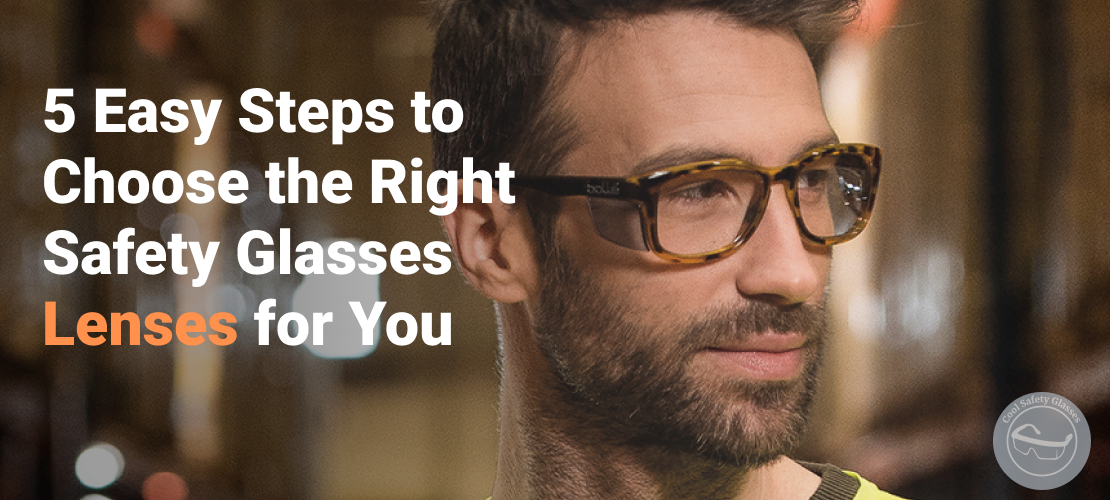Choosing the right lens material, type, tint, and coaching for your new safety glasses can be frustrating with all the options available out there. Some people choose lens tint according to their preferred color. No this is not the right way.
Let me share with you the 5 steps that you should take to choose the right lenses for your new safety glasses.
After reading this article you will understand everything you need to know about safety glasses lenses and how to pick the one that will suit your needs.
Let’s walk through the simple 5 steps to choose the right lenses for your new safety glasses.
5 Steps to Choose the Right Safety Glasses Lenses
- Make Sure to Choose the Right Lens Material for Your Safety Glasses
- Understand the Type of Lenses Used in Safety Glasses
- Choose the Right Safety Glasses Lens Tint for Your Activity
- Improve Your Visual Comfort by Choosing the Right Lens Coating
- Prescription Lens for Safety Glasses
1. Make Sure to Choose the Right Lens Material for Your Safety Glasses

Lens material plays an essential role in your vision, comfort, health, and safety, wearing the wrong material can cause headaches, reduce vision clarity, and can also be so dangerous to your eye safety. Let us see why?
The Types of Lens Material Used in Safety Glasses
Polycarbonate Lenses

Polycarbonate plastic is a strong and lightweight thermoplastic material used in safety glasses to provide good visibility, durability, impact resistance, and shatter resistance. It is produced via chemical reactions bet
Polycarbonate plastic is a strong and lightweight thermoplastic material used in safety glasses to provide good visibility, durability, impact resistance, and shatter resistance. It is produced via chemical reactions between bisphenol A (BPA) and phosgene COCl2 and was patented in 1953 by his inventor Hermann Schnell.
Polycarbonate lenses have many advantages making them ideal for children’s eyeglasses, safety glasses, sports eyewear, and military eyewear. Polycarbonate lenses excel in all ANSI Z87 tests.
Advantages of Polycarbonate Lenses:
- Polycarbonate lenses are durable and 250 times stronger than glass.
- Polycarbonate lenses are 10 times more resistant to impact than regular plastic.
- Polycarbonate lenses are shatter-resistant.
- Polycarbonate lenses weigh 30% less than regular plastic.
- Polycarbonate lenses are exceptionally clear and give High optical clarity.
- Polycarbonate lenses block 99% of UV rays without any coating.
- Polycarbonate lenses give 60% better protection from heat than glass.
- Polycarbonate lenses can be molded into a wide variety of shapes
- Polycarbonate lenses are very cost-effective
- Polycarbonate lenses are easy to install and replace in any frame
- Polycarbonate lenses are available and inexpensive.
- (for people who care much about the environment) polycarbonate can easily be recycled
Disadvantages of Polycarbonate Lenses:
- Polycarbonate lenses are not anti-scratch.
- Polycarbonate lenses do not support all prescriptions.
- Polycarbonate lenses are not anti-reflective
Solutions for Some Polycarbonate Lenses Disadvantages
For scratch resistance, you just need to use an anti-scratch coating on your Polycarbonate lenses.
For prescriptions, if the Polycarbonate doesn’t support your prescriptions, consider using an RX insert safety glasses.
For anti-reflection, only adding an anti-reflection coating will permanently remove the reflection.
Trivex Lenses

Trivex lenses are new on the market; they have been introduced in 2001 by PPG Industries as a reliable and more efficient substitute for polycarbonate lenses. Trivex lens material is made primarily of Trivex, an advanced polymer that possesses the Advantages of polycarbonate, which give it superior optical clarity, scratch resistance, and photochromic performance.
Besides being called Trivex, the lens material is marketed under several alternative brand names by lens manufacturers, including NXT (Essilor), Phoenix (Hoya), and Trilogy (Younger Optics).
Advantages of Trivex Lenses:
- Trivex lenses have exceptional optical clarity.
- Trivex lenses have higher impact resistance than polycarbonate.
- Trivex lenses are ultra-lightweight and comfortable.
- Trivex lenses block 100% of UV rays without any coating.
- Trivex prescription glasses boast a high Abbe value of 43 to 45.
- Trivex lenses are slimmer so they give more comfort.
- Trivex lenses are scratch-resistant and shatter-resistant.
Disadvantages of Trivex Lenses:
- Trivex lenses are the most expensive lenses on this list.
- Trivex lenses cannot offer the same degree of thinness as other materials.
- Trivex lenses are less available than other materials.
CR-39 Plastic Lenses

CR-39 is an abbreviation that stands for Columbia Resin #39 which was the 39th formula of a thermosetting plastic developed by the Columbia Resins project in 1940 to be used in tanks and aircraft during World War II.
Today CR-39 Plastic is used primarily in eyewear including safety glasses, The CR-39 material offers good scratch resistance, a very good optical clarity, but remains a relatively soft material that will not stand impact tests.
Advantages of CR-39 Plastic Lenses:
- CR-39 Plastic lenses offer crystal vision.
- CR-39 Plastic lenses are cheap and available.
Disadvantages of CR-39 Plastic Lenses:
- CR-39 Plastic lenses are not scratch-resistant.
- CR-39 Plastic lenses are heavier than other materials.
- CR-39 Plastic lenses are not shatter-resistant and can be cracked easily.
- CR-39 Plastic lenses don’t protect you from UV rays.
Solutions of Some CR-39 Plastic Lens Disadvantages
For scratch resistance, you just need to use an anti-scratch coating on your CR-39 Plastic lenses and for UV rays protection you also need to use UV coating on your CR-39 Plastic lenses.
High-index Plastic Lenses

High-index plastic lenses are made of a special plastic material that refracts light in a different way than regular plastic lenses. They are built for strong prescriptions without adding any thickness to the lens because of their higher refractive index, usually 1.60 to 1.74.
High-index plastic lenses are heavy and cannot stand up to high impact, this is why they will never be used in safety glasses.
Advantages of High-index Plastic Lenses
- High-index plastic lenses are less noticeable because of their thickness
- High-index plastic lenses offer high optical clarity.
- High-index plastic lenses work with all prescriptions.
- High-index plastic lenses are scratch-resistant.
- High-index plastic lenses block 100% of UV rays without any coating.
Disadvantages of High-index Plastic Lenses
- High-index plastic lenses do not impact resistant
- High-index plastic lenses are not anti-reflective.
Solutions of Some High-index Plastic Lenses Disadvantages
For reflection, you can add a coating to your high index lenses.
Glass Lenses

Glass lenses were the most used lens in the past; they are still used today for a specific purpose. Glass lenses offer exceptional optics, but they are heavy, break easily and shatter, which makes them dangerous for the eyes. You will never find Safety glasses with a glass lens.
Advantages of Glass Lenses:
- Glass lenses offer a crystal clear vision
- Glass lenses are scratch-resistant
- Glass lenses are durable
- Glass lenses are cheap and available
- Glass lenses offer Precise Light Distribution
Disadvantages of Glass Lenses:
- Glass lenses are not shattered-resistant. What makes them dangerous to your eyes
- Glass lenses are heavier than any other lens material
- Glass lenses can break easily
- Glass lenses don’t protect you from UV rays
Solutions of Some Glass Lenses Disadvantages
For UV rays protection you also need to use UV coating on your glass lenses.
The Difference Between Polycarbonate, High-index, Trivex, Cr-39, Glass.
| Polycarbonate | High-index plastic | Trivex | CR-39 | Glass | |
| Impact resistance | Yes | No | Yes | Yes | No |
| Scratch resistance | No | Yes | No | No | Yes |
| Shatter resistance | Yes | Yes | Yes | Yes | No |
| UV rays protection | Yes | Yes | Yes | No | No |
| Abbe Value | 30 | 36 | 43 | 58 | 59 |
| Index | 1.58 | 1.60 | 1.53 | 1.49 | 1.523 |
| Weight | Light | Heavy | Light | Light | Heavy |
| Price | Cheap | Expensive | Expensive | Cheap | Cheap |
| optical clarity | Good | Crystal clear | Crystal clear | Good | Crystal clear |
| Heat resistance | Yes | No | Yes | Yes | No |
| Easy to Shape | Yes | Yes | No | Yes | Yes |
KEY TAKEAWAYS: So if you are looking for durable, strong, comfortable, and impact resistance safety glasses lenses for an affordable price you really should go for polycarbonate or Trivex for more optical clarity.
2. Understand the Type of Lenses Used in Safety Glasses
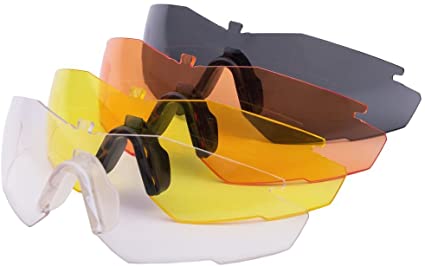
Progressive Lenses
Progressive lenses (PAL) are multifocal lenses that help you see clearly at multiple distances without a bifocal line. The need for a progressive lens increases with age. By the age of 35 or 40, many people have difficulty focusing their eyes on nearby objects.
Prescription safety glasses can come with progressive bifocal lenses such as Non-RX, RX, and RX insert. If you want a progressive lens in your safety glasses you should have a prescription from your doctor.
Advantages of Progressive Lenses:
- One pair of eyeglasses for everything
- No distracting bifocal line
- Modern, youthful glasses
Disadvantages of Progressive Lenses:
- Takes time to adjust
- Visual distortions
- Higher cost
How to overcome distortions caused by Progressive Lenses?
Wearing progressive lenses for the first time can cause distortions if you don’t know how to use them. You should always point your nose in the viewing direction to avoid all distortions and when you’re reading, you need to keep your chin up and look through the bottom portion of the lens. By doing this every day your brain will adjust in a couple of weeks.
Bifocal Lenses
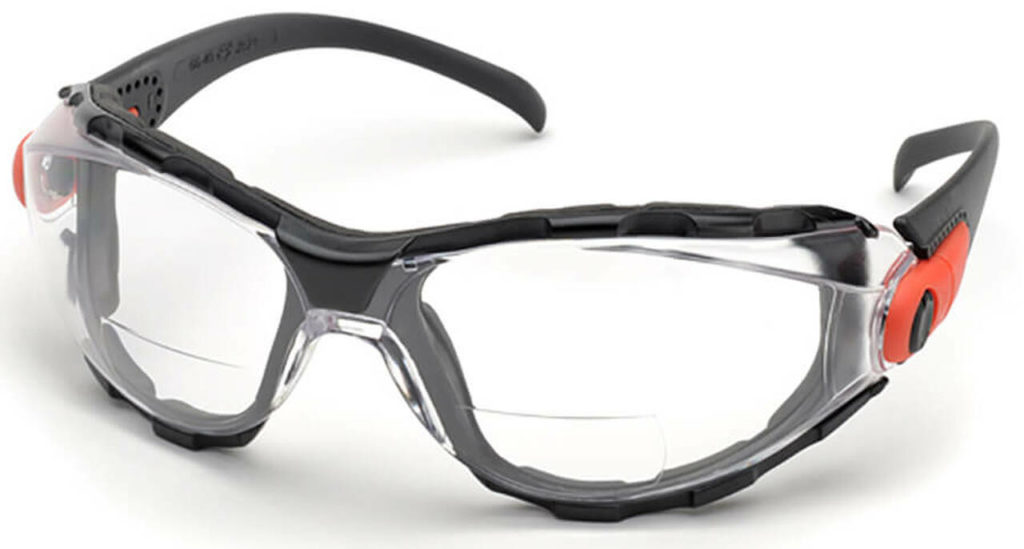
Bifocal lenses contain two lens power to help you see objects at all distances after you lose the ability to naturally change the focus of your eyes due to age, also known as presbyopia.
People who are 40 years old or older are the ones who are most likely to get bifocal lenses prescription.
Bifocal lenses have a small portion in the lower part of the lens that contains the power required to correct your near vision and the rest of the lens is for your distance vision.
Advantages of Bifocal Lenses
- One pair of glasses for everything
- Cheaper than other options such as progressive lenses
- Easier to adjust to than progressive lenses
Disadvantages of Bifocal Lenses
- Distracting bifocal line
- Potential visual distortions
- It takes some time to adjust
Single Vision Lenses
Single vision lenses are built to correct vision for a single distance. They work for people who have problems with either nearsightedness or farsightedness but not for both like multifocal or Bifocal lenses.
Advantages of Single Vision Lenses
- Visual improvement.
- No more eye strain and migraines.
- Cheap and distortion-free.
Disadvantages of Single Vision Lenses
- Those with more than one prescription may need a different pair for each task.
Photochromic Lenses
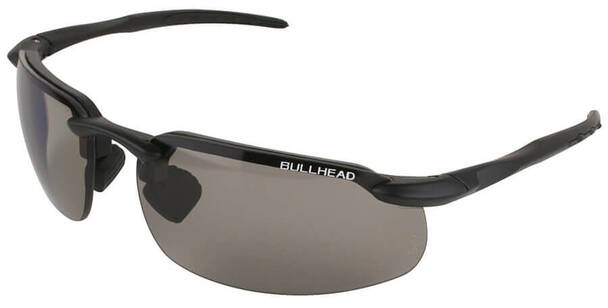
Photochromic lenses are clear lenses that get darkened when exposed to sunlight. Other people call them “light-adaptive lenses,” “light intelligent” and “transitions lenses.”
Photochromic lenses use molecules responsible for causing photochromic lenses to darken and are activated by the sun’s ultraviolet radiation and they will return clear when not exposed to UV rays.
Some new Photochromic lenses technology allows the lenses to get darker when exposed to visible light, so your photochromic safety glasses will get darkened inside your vehicle even if the windshield blocks UV light.
Advantages of Photochromic Lenses
- They adapt to environmental changes (indoor, outdoor, high or low brightness).
- They provide greater comfort since they reduce eye strain and glare in the sun.
- They are available for most prescriptions.
- They provide daily protection against harmful UV rays, by absorbing 100% of UVA and UVB rays.
- They allow you to stop juggling between your pair of clear glasses and your sunglasses.
Disadvantages of Photochromic Lenses
- They are affected by the weather. This means that it takes more time to get dark in the winter.
- If they are not polarized, they will lead to harsh glares of sunlight.
Polarized Lenses
A polarized lens reduces glare and absorbs incoming horizontal light by using a special chemical applied to the lenses that use molecules that are lined up specifically for horizontal light.
When this horizontal light is blocked, your vision becomes a bit darker but objects in front of you and underwater objects and fish can be seen crisper and clearer.
Polarized lenses are used in many activities like driving, boating, golfing, and skiing. They can also be used by Anyone who is bothered by outdoor glare.
Some light-sensitive people, including those who have recently had cataract surgery, can also benefit from polarized lenses.
Advantages of Polarized Lenses
- Clearer vision, especially in bright light.
- Increased contrast and minimal color distortion.
- Reduced glare and reflection.
- Reduced eye strain.
Disadvantages of Polarized Lenses
- Looking at LCD screens.
- Low-light situations and driving at night.
- People whose sight may be sensitive to how the lenses change the lighting.
Laser Lenses
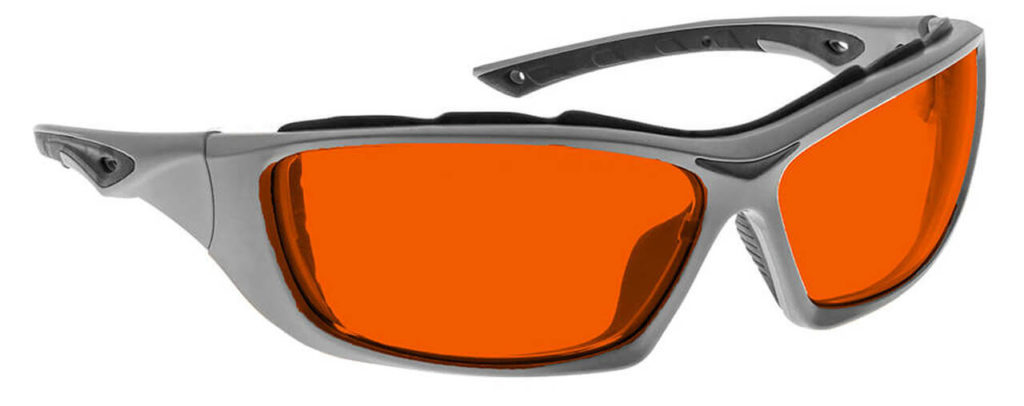
Laser lenses are built to protect your eyes from laser light used in medical, military, research, education, and many industrial applications. They block hazardous laser eye exposure to safe and permissible levels by providing an optical density (OD) that attenuates the laser you are working with while allowing visible light transmission.
Advantages of Laser Lenses
- Total protection against laser light
- Protection against Harmful Radiations
Color Blind Lenses
Colorblind lenses are tinted with special tints that help color bling persons to see colors more accurately. Those lenses will not cure color blindness or produce 100% normal color vision. But they enhance and partially correct certain color vision deficiencies of colorblind individuals.
Advantages of Color Blind Lenses
- Enhance and partially correct certain color vision deficiencies of colorblind individuals.
KEY TAKEAWAYS: Every lens had been built for a purpose. if you are going for prescription glasses then you should consider Bifocal, progressive and single vision. If the glare makes you uncomfortable you can go for polarized or Photochromic lenses. If you have color blindness problems then go for Color Blind Lens.
3. Choose the Right Safety Glasses Lens Tint for Your Activity
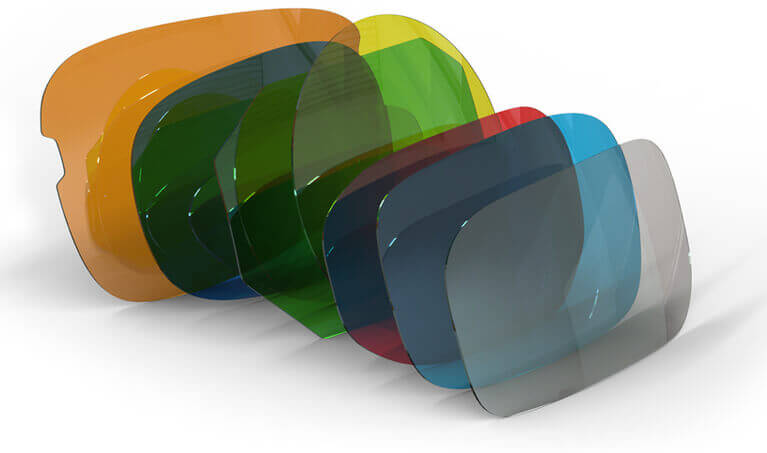
Lens tints are not for fashion, every tint has its own purpose, and some of them are better at blocking light. Some enhance colors while others distort them.
Before diving into lens tint differences and Advantages, let us understand the hazards of light exposure.
Understand Light Exposure
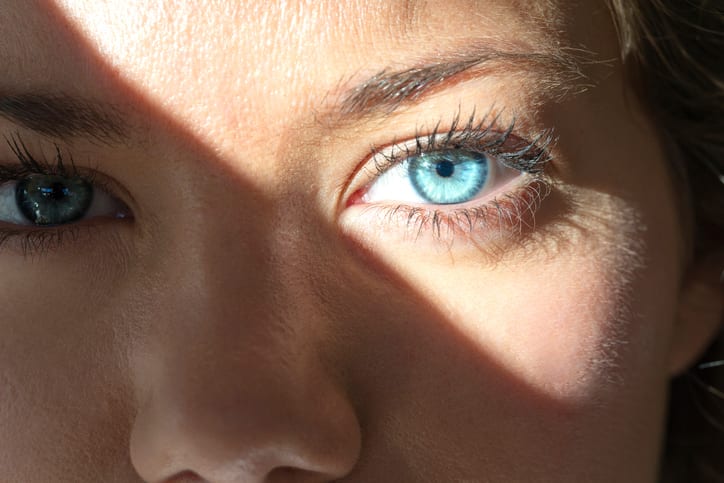
Every day your eyes are exposed to all kinds of light from sunlight that contains a wide range of different-colored visible light rays to the artificial light coming from TV, computer, phone, and other digital devices. staring at bright lights for a long time can damage your eyes.
Visible/White Light
The visible light or the white light spectrum is the segment of the electromagnetic spectrum that the human eye can view. If visible light is broken out through a prism, we can see a rainbow pattern showing the spectrum of light colors visible to us.
That spectrum comprises electromagnetic radiation with wavelengths ranging from 380 nanometers (nm) on the blue end of the spectrum to about 700 nm on the red end. Staring for a long time into visible bright light can cause serious damage to the eye.
Blue Light

Blue light can be beneficial during the day as it will boost your attention, reaction times, and mood but at night it becomes dangerous. A long time an eye gets exposed to blue light will throw the body’s biological clock out of whack and that will cause Sleep suffering time. It will also contribute to the causation of cancer, diabetes, heart disease, and obesity.
Ultraviolet (UV) Light

Ultraviolet light is a type of electromagnetic radiation that makes black-light posters glow, and is responsible for summer tans. But overexposure to UV light can result in sunburns and damage to the eyes, this is why we wear sunscreen and wear safety glasses or sunglasses to block UV light.
Infrared Radiation (IR) Light
Infrared radiation (IR), or infrared light, is a type of radiant energy that’s invisible to human eyes but that we can feel as heat. IR is harmful to humans. Too much exposure can damage your eyes and skin.
Visible Light Transmission
Visible Light Transmission (VLT) is a measurement of the number of visible light waves that transmit through a material like a window or glass. VLT is measured as a percentage.
Why Is Lens Tint So Important?
Tinted lenses protect your eyes against UV radiation, Infrared radiation, and blue light, they reduce glare and block other harmful light. They also control the VLT coming to your eyes.
How Is the Lens Tinted?
Plastic lenses are tinted with a heat-treated process using specially formulated chemical dyes. For glass and Plano (non-prescription) lenses there is a method called ‘Constant Density’ used for tinting.
What Does Tinted Lens Mean?
Tinted lenses are lenses with a pigmented dye in them. There are a variety of tint colors available, blue, red, yellow, green, and more. Tinted lenses can be made lighter or darker according to an individual’s preference.
The Difference Between Lens Tints Color
Choosing the right tint can improve the performance of your eyewear in specific environments and activities.
Blue and Purple Lens

Blue and purple lenses can be a good choice for fashion tints, they look good on almost any skin tone. They enhance color perception and reduce yellow light and glare. Which makes them a good choice for skiing, and fishing.
Gray Lens

Gray is a neutral color which makes him a good choice for drivers and fishermen, because of his ability to reduce brightness and glare without changing the world colors. Gray tinted lenses work in every weather condition like cloudy and sunny days and provide anti-fatigue Advantages.
Red and Rose Lens
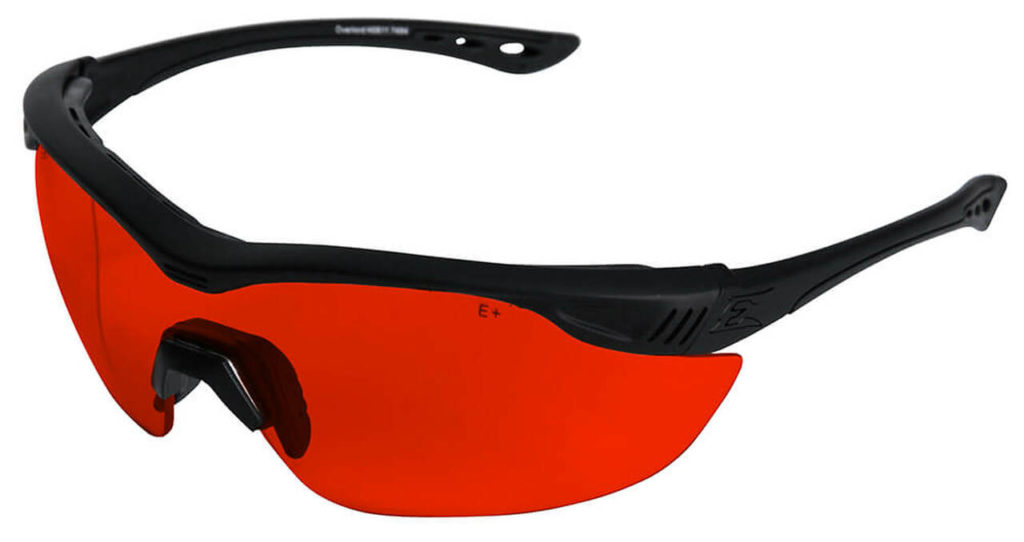
Red and rose tints block blue light, reduce glare, and increase contrast. They are soothing to the eyes and comfortable to wear for a long time. Red and rose lenses are a good choice for driving, shooting, and for people who spend a lot of time in front of the computer.
Green Lens

Green lens tints provide contrast and visual sharpness by filtering out blue light. They also reduce glare and eyestrain in bright light. If you are a golf, tennis, or baseball player green lens will be the right choice for you.
Yellow and Orange Lens

Yellow and orange lenses distort colors but they make objects sharper more than any other lens tint, both indoors and outdoors. They increase contrast in hazy, foggy, or low-light conditions. Which makes them useful during nighttime, Driving in the fog, and Snow-related activities.
Amber and Brown Lens

Amber and brown tints make your vision bright and help you see clearly during cloudy days because they block blue light and reduce glare. They are useful against green and blue backgrounds and work especially well for sports where judging distance is important like tennis, golf, baseball, fishing, hunting, cycling, and water sports.
What Are Gradient Lenses?
Gradient lenses are tinted, usually from the top-down, with the darkest portion at the top gradually fading to either minimal or no tint at the very bottom. Gradient lenses are not always tinted like that, sometimes they are from one color to another.
What Is the Goal of Gradient Tint Lenses?
The goal of gradient tint lenses is that the top darkest portion of the lens blocks most of the light while the bottom portion allows light through for better vision.
Tinted Lenses Vs Polarized Lenses
Tinted lenses will reduce light intensity, increase contrast and block blue light but they will not eliminate glare. On the other hand, polarized lenses will do exactly what tinted lenses do and it will also eliminate the glare because of the special chemical applied to the lenses that block horizontal light “glare” coming to the eyes.
KEY TAKEAWAYS: Before buying any safety glasses you should know which lens tint is the best for your activity or job. Remember that Every lens tint is better than others for certain situations and vice versa.
4. Improve Your Visual Comfort by Choosing the Right Lens Coating

Lens coating can be invisible but they are what makes a pair of safety glasses or any other glasses an effective tool.
The anti-scratch coating can protect your lenses from scratch and make them durable, adding an anti-reflective coating will reduce reflection and help others see your eyes when speaking to you. There are other coatings like anti-fog, polarized, and UV treatment.
Let us see in detail all those coatings and how they work.
Scratch-resistant Coating
There are no eyeglasses lenses that are 100% scratch-proof, not even glass. The only way to make your lenses scratch-resistant is by applying a scratch-resistance coating to them. When you apply the coating the lenses become harder and stronger they will not be scratched easily which will make them durable.
Scratch-resistance coating is a good choice for kids’ safety glasses because of their durability. Remember that you always need to clean your lenses with a microfiber cloth and store them in a cushioned case when not in use.
Also, don’t trust the product that promises to repair scratched lenses, because they will only fill in the scratches, but it is impossible for them to make the scratches disappear forever.
Advantages of the Anti-scratch Coating
- Full transparent coating.
- High resistance to scratch and abrasion.
- Nano-metric thickness.
- A homogeneous and capable process.
Anti-reflective (AR) Coating
Anti-reflective coating (also known as AR coating or anti-glare coating) is a microscopically thin multilayer coating that eliminates reflections from the front and back surface of eyeglass lenses.
This makes your safety glasses lenses almost invisible to people, so you can focus on your eyes and not distract them with reflections. The anti-reflective coating gives you a comfortable vision while driving, reading, or computer use.
For people who choose polycarbonate or high-index lenses, it is highly recommended to add an AR coating because these materials reflect more light than regular glass or plastic lenses.
Advantages of the Anti-reflective (AR) Coating
- Increase Your Visual Clarity.
- Enhance Your Appearance.
- Reduce Your Blue Light Exposure.
- Protect Your Eyes from UV Rays.
Disadvantages of Anti-reflective Coating
- They can look dirty if you don’t take care of them because there is no glare that hides the dirt.
- They need cleaning every time.
Polarized Coating

The polarized coating reduces glare and absorbs incoming horizontal light by using a special chemical applied to the lenses that use molecules that are lined up specifically for horizontal light.
When this horizontal light is blocked, your vision becomes a bit darker but objects in front of you and underwater objects and fish can be seen crisper and clearer.
Polarized lenses are not only used in activities like driving, boating, golfing, and skiing, they can also be used by Anyone who is bothered by outdoor glare. Some light-sensitive people, including those who have recently had cataract surgery, can also benefit from polarized lenses.
Advantages of Polarized Coating
- Clearer vision, especially in bright light.
- Increased contrast and minimal color distortion.
- Reduced glare and reflection.
- Reduced eye strain.
Disadvantages of Polarized Coating
- looking at LCD screens.
- low-light situations and driving at night.
- people whose sight may be sensitive to how the lenses change the lighting.
Anti-fog Coating
If you wear a mask or you live in a gold area, your safety glasses can get foggy multiple times during the day and this is a problem. Foggy glasses distract you from your duty and limit your ability to see until the fog clears.
Foggy glasses can be dangerous especially for soldiers during combat, police officers, first responders to emergency situations, and workers in workshops while using sharp tools.
The anti-fog coating eliminates the condensation of moisture on lenses that causes fogging. So if you are wearing a mask or living in a cold-weather environment your safety glasses lenses will not fog.
Advantages of the Anti-fog Coating
- Combat heat and humidity.
- Decrease fogging frustrations.
- Enhance vision by increasing visibility.
- Manage sudden environmental changes.
- Improve performance and efficiency.
Ultraviolet (UV) Coating
Ultraviolet (UV) Coating blocks harmful UV rays from reaching the eye. It is mostly used in glass lenses because they don’t protect from UV light without a coating. Just as sunscreen keeps the sun’s UV rays from harming your skin, Ultraviolet coating for eyeglass lenses blocks those same rays from damaging your eyes.
Advantages of the Ultraviolet (UV) Coating
- Helps prevent the damage UV radiation can do to your eyes.
KEY TAKEAWAYS: The lens coating will improve your experience with your safety glasses, the two most important ones are the anti-scratch and anti-reflective for any safety glasses. The importance of the other coating will depend on your situation.
5. Prescription Lens for Safety Glasses

If you are thinking if safety glasses can come with prescription lenses, yes safety glasses can come with prescription lenses. Prescription safety glasses combine the protection that is offered by safety glasses and the crystal clear vision from prescription glasses.
Online suppliers of prescription safety glasses usually require a faxed, emailed, or mailed copy of your current prescription.
What Are the Types of Prescription Safety Glasses
The two types of prescription safety glasses are Rx and Rx insert? Let us see what it means and what is the difference between them.
RX Safety Glasses
Rx safety glasses mean that the lenses used in those safety glasses are completely prescription. They offer the impact resistance of safety glasses and the vision correction of prescription glasses.
RX insert Safety Glasses
The Rx insert safety glasses mean that those safety glasses lenses are Plano with the use of a special product named RX insert or lens insert that allows combining normal eyewear with prescription lenses. Like in this picture

What Is the Difference Between Rx and Rx Insert
The difference between Rx and Rx insert safety glasses is the ability to change the prescription lens insert behind the safety glasses without the need to change them.
This doesn’t mean that Rx inserts are better, in fact, they are heavier than the Rx safety glasses because of the prescription lenses that are inserted behind them. And yes they are cheaper.
KEY TAKEAWAYS: If you are someone who wants the two in one, protection and eyesight correction. Then you can go for prescription safety glasses if not you can still use over-prescription safety glasses.
Summary
The Lens tint, material, and coating if they are chosen correctly will improve your experience with your safety glasses. Polycarbonate is always the best choice when it comes to safety and lightweight for a cheap price.
When it came to coating, anti-scratch and anti-reflection are the most important and if you work in a humid environment then you also need to add an anti-fog coating. The tint color depends on your activity and situation. prescription lenses are always better to have if you need eyesight correction.
I hope this article helped you. If you have any questions please write them in the comment box below.
